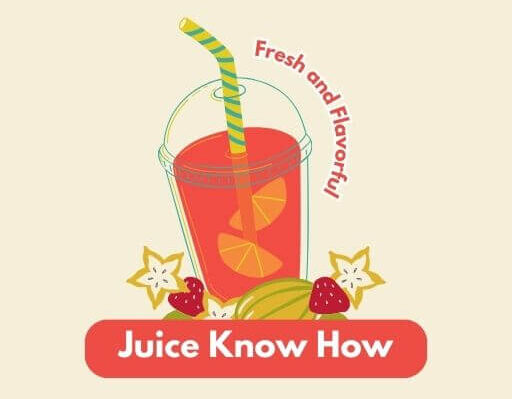If you’ve ever found yourself squinting at a recipe that calls for a certain amount of lemon juice, you’re not alone. Lemons are nutritional powerhouses, and their juice can brighten up everything from salad dressings to desserts. But how do you know how much of that liquid gold you’re actually getting? Let’s dive into the juicy details.
Why Knowing the Juice Content Matters
Recipes often call for specific amounts of lemon juice, and precision can be key, especially in baking. Too much or too little lemon juice can throw off the balance of flavors and textures. Knowing how much juice to expect from one lemon helps you:
- Follow recipes accurately: Achieve the intended flavor profile.
- Avoid over- or under-seasoning: Ensure your dishes taste just right.
- Reduce food waste: Use lemons efficiently and avoid waste.
- Make substitutions: Determine how much bottled juice to use if needed.
Decoding the Lemon: Size and Yield
The amount of juice you get from a lemon depends on several factors:
- Size: Larger lemons generally contain more juice.
- Variety: Some lemon varieties are juicier than others.
- Ripeness: Ripe lemons tend to yield more juice.
- Juicing method: Using the right tools and techniques can maximize juice extraction.
Generally, you can expect the following juice yields:
- Half a lemon: Approximately 4 ½ to 6 teaspoons (1½ to 2 tablespoons).
- Small lemon: Approximately 6 to 9 teaspoons (2 to 3 tablespoons).
- Medium lemon: Approximately 9 to 12 teaspoons (3 to 4 tablespoons).
- Large lemon: Approximately 12 to 15 teaspoons (4 to 5 tablespoons).
As a general rule, one regular-sized lemon contains about 2-3 tablespoons of juice. On average, there are 3 tablespoons of juice in one lemon. Therefore, you can estimate about 9 teaspoons of lemon juice per lemon.
Tools of the Trade: Maximizing Juice Extraction
To get the most juice out of your lemons, avoid simply squeezing the fruit with your hands. Lemons are dense, and their juice is stored in sacs that need to be broken to release the liquid. Here are some tools that can help:
- Reamer: Plunge the pointy, ridged reamer into a cut lemon to break up the pulp and release juice.
- Juice press: Presses flatten the fruit to push out the juice.
- Kitchen spoon: Use a large kitchen spoon as a reamer.
- Kitchen shears: These can also work to extract juice.
Zest for Success: Don’t Forget the Zest
Many recipes that call for lemon juice also require lemon zest. Zest is the outermost layer of the lemon peel, packed with fragrant oils that add intense lemon flavor. Use a citrus zester or microplane to remove the zest before juicing, as it’s much harder to zest a squeezed lemon. One lemon typically yields about one tablespoon of zest.
Tips and Tricks for Lemon Lovers
Here are some additional tips to help you get the most out of your lemons:
- Room temperature: Bring lemons to room temperature before juicing, as this can increase juice yield.
- Roll it out: Roll the lemon on the countertop before cutting to help release more juice.
- Cut correctly: Cut the lemon lengthwise instead of crosswise to get more juice.
- Measure carefully: Squeeze the juice into a small bowl and measure out the required amount to avoid seeds and ensure accuracy.
Bottled vs. Fresh: Is There a Difference?
While bottled lemon juice is convenient, fresh lemon juice offers superior flavor. Bottled juice can sometimes have a metallic or artificial taste due to preservatives and processing. If a recipe calls for the juice of one lemon, you can substitute with 3 tablespoons of bottled lemon juice. However, for the best flavor, always opt for fresh when possible.
Lemon Juice Conversions
Here’s a handy guide to converting lemons into juice:
- 1/3 Lemon: 1 tablespoon lemon juice
- 1 Lemon: 3 tablespoons lemon juice
- 1 1/4 Lemons: 1/4 cup lemon juice
- 2 1/2 Lemons: 1/2 cup lemon juice
- 4 Lemons: 3/4 cup lemon juice
- 5 1/4 Lemons: 1 cup lemon juice
Keep in mind that these conversions are approximations and can vary based on the lemon’s characteristics.
Beyond the Recipe: Creative Uses for Lemon Juice
Lemon juice isn’t just for cooking and baking. It has a variety of other uses:
- Cleaning: Lemon juice can be used to clean surfaces, remove stains, and deodorize.
- Beauty: It can brighten skin, lighten hair, and strengthen nails.
- Health: Lemon juice is a good source of vitamin C and antioxidants.
- Gardening: It can adjust soil pH and deter pests.
Conclusion
Knowing how many teaspoons of lemon juice are in one lemon empowers you to cook and bake with confidence. You can adjust recipes, avoid waste, and enjoy the bright, zesty flavor of fresh lemons in all your culinary creations. So, go ahead, grab a lemon and start squeezing!
